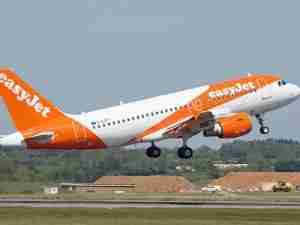Southwest’s New 737 Lags in On-Time Flights in Max’s U.S. Debut
By: | Nov 13 2017 at 10:32 AM | Air Cargo
Southwest Airlines Co.’s new 737 Max jets will offer the latest and greatest in flying efficiency from Boeing Co.—at least once all the kinks are worked out.
In its first month of flying, the 10 Max planes in Southwest’s fleet ranked behind its more seasoned aircraft for on-time performance. While the hiccups weren’t serious, they served as a reminder of the challenges in putting a new aircraft into commercial service, even for a carrier like Southwest that flies only 737s.
The smallest details can add minutes: The Max nose gear is eight inches taller, so ramp workers have to fetch a step stool to connect the plane to ground power at the gate. The jet bridge has to be readjusted to eliminate gap. And new procedures are needed for everything from pre-flight checks to parking the plane, Southwest spokeswoman Brandy King said.
Airlines will be watching Southwest’s experience carefully, because tardiness at the gate can boost costs. That’s no small matter for a plane that will carry billions of travelers worldwide during the next few decades, as the roughly 4,000 Max planes already on order replace existing single-aisle jets—the workhorses of global airline fleets.
“They’ll be looking at everybody’s data and seeing what works and where people are having problems,” said Mark Drusch of consultant ICF Inc., referring to American Airlines Group Inc. and other carriers that will soon fly the Max. Norwegian Air Shuttle ASA, Indonesia’s Lion Mentari Airlines PT and FlyDubai are already operating the Max.
Not On Time
Only 75 percent of the Max’s arrivals in October were on time at Southwest, compared with 87 percent for the airline’s 737-800s and 83 percent for the 737-700s, according to data provided by FlightAware, a flight-tracking service. Departure rates were about the same. The 10 new jets were used in just over 1 percent of Southwest flights for the month, marking the Max’s entry into service for a U.S. carrier.
The sluggishness is only temporary, Southwest says. Introducing a new aircraft type to the fleet “comes with a steep learning curve,” King said. Adjustments have to be made with any new plane, even one from the same family. Chief Operating Officer Mike Van de Ven told investors last month there hadn’t been “any surprises or unexpected issues.”
Boeing is pleased so far with the performance of the Max, which uses less fuel, needs less maintenance, and makes less noise than earlier generations. “We anticipate some minor issues as part of the normal course of operations,” said Adam Tischler, a spokesman for the Chicago-based planemaker.
There was also some good news for Southwest in the Max’s first month. Even as the October laggard, the aircraft outperformed the aging 737-300 jets it was brought in to replace. Those planes, the oldest at the Dallas-based carrier, had a 69 percent on-time rate when they left the fleet.










